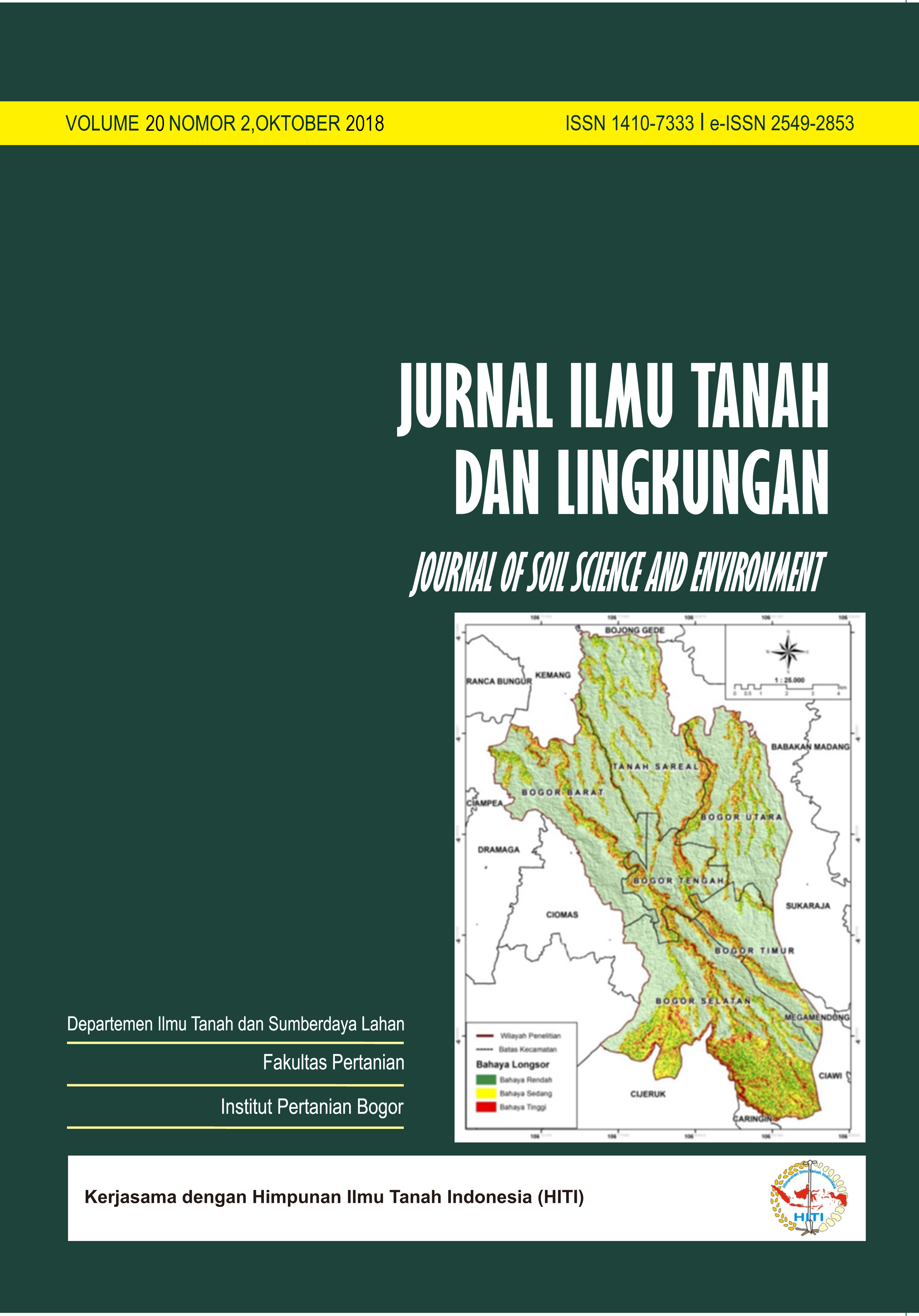Analysis of Rainfall Pattern for Lahar Mitigation at Sinabung Volcano
Analisis Pola Hujan untuk Mitigasi Aliran Lahar Hujan Gunungapi Sinabung
Abstract
Lahar is a natural process that becomes a hazard when it affects people and the environment. Lahars that are formed by a high intensity of rain and then form flows are secondary volcanic hazards. Sinabung Volcano that erupted in 2010 to date has released pyroclastic materials more than a hundred million cubics that can become lahars. To anticipate lahars, it is necessary to find out the rainfall pattern around the volcano. Therefore, this rainfall pattern information can be used to prepare the mitigation plan in order to anticipate lahars at Sinabung Volcano. Analysis of rainfall pattern uses measurement data of Sampali Climatology Station, Parapat Geophysical Station and Tuntungan Geophysical Station from 2000 to 2017. Buishand Range is used to testing the homogeneity of rainfall records. Then, the distribution of rainfall is displayed in the bar chart. Trend analysis uses Mann Kendall Test. The result of this research shows that the rainfall pattern at Sinabung Volcano is an equatorial rainfall pattern with the highest rainfall in May and October. Besides, trend analysis also shows the increase of rainfall in May so that mitigation needs to be prepared well to anticipate the risk of lahar hazards.
Downloads
References
Aldrian, E. and R.D. Susanto. 2003. Identification of three dominant rainfall regions within Indonesia and their relationship to sea surface temperature. International Journal of Climatology, 23(12): 1435–1452.
[BPS] Badan Pusat Statistik Kabupaten Karo. 2015. Karo dalam Angka. Karo (ID): BPS Kabupaten Karo.
[BG] Badan Geologi. Gunung Sinabung. https://magma.vsi.esdm.go.id/ (diakses tanggal 30 Desember 2017).
Buishand, T.A. 1982. Some methods for testing the homogeneity of rainfall records. Journal of Hidrology, 58(1-2): 11-27.
Hermawan, E. 2010. Pengelompokkan pola curah hujan yang terjadi di beberapa kawasan pulau Sumatera berbasis hasil analisis teknik spektral. Jurnal Meteorologi dan Geofisika, 11(2): 75 – 85.
Hidayat, F. dan I. Rudiarto. 2013. Pemodelan resiko banjir lahar hujan pada alur kali putih Kabupaten Magelang. Jurnal Teknik PWK, 2(4):895-904.
Indarto, B. Susanto dan E.M. Diniardi. 2011. Analisis kecenderungan data hujan di Jawa Timur menggunakan metode Mann-Kendal dan Rank-Sum Test. Jurnal Keteknikan Pertanian, 25(1):19-28.
Nihayatin, L.Z. dan Sutikno. 2013. Perbandingan uji homogenitas runtun data curah hujan sebagai pra-pemrosesan kajian perubahan iklim. Jurnal Sains dan Seni Pomits, 2(2):255-259.
Pierson, T.C., N. Wood and C.L. Driedger. 2014. Reducing risk from lahar hazards: concepts, case studies, and roles for scientists. Journal of Applied Volcanology, 3(16): 1-25.
Saragih, J., D. Chalil dan S. Khadijah. 2015. Analisis dampak erupsi gunungapi sinabung terhadap pendapatan petani kubis di Kecamatan Simpang Empat. Journal on Social Economic of Agriculture and Agribusiness, 4(5): 1-13.
Schilling, S.P. 2014. Laharz_py—GIS Tools for Automated Mapping of Lahar Inundation Hazard Zones. US Geological Survey, Virginia.
Sipayung, S.B., Sutikno, L.Q. Avia dan B.D. Dasanto. 2007. Analisis pola curah hujan Indonesia berbasis luaran Model Sirkulasi Global (GCM). Jurnal Sains Dirgantara, (4)2:145-154.
Sanusi, W. 2016. Analisis homogenitas data curah hujan tahunan Kota Makassar. Jurnal Scientific Pinisi, 2(2):137-142
Subarna, D. 2014. Uji Kecenderungan unsur-unsur iklim di cekungan Bandung dengan Metode Mann-Kendall. Berita Dirgantara, 15(1):1-6.
Yulianto, F., Suwarsono and P. Sofan. 2016. The utilization of remotely sensed data to analyze the estimated volume of pyroclastic deposits and morphological changes caused by the 2010–2015 eruption of Sinabung Volcano, North Sumatra, Indonesia. Pure and Applied Geophysics, 173.
Vallance, J.W., S.P. Schilling, G. Devoli and M.M. Howell. 2014. Lahar Hazards at Concepcion Volcano, Nicaragua. U.S. Geological Survey, Vancouver WA, US.
Department of Soil Science and Land Resources Departemen Ilmu Tanah dan Sumberdaya Lahan, Faculty of Agriculture Fakultas Pertanian, IPB University



















